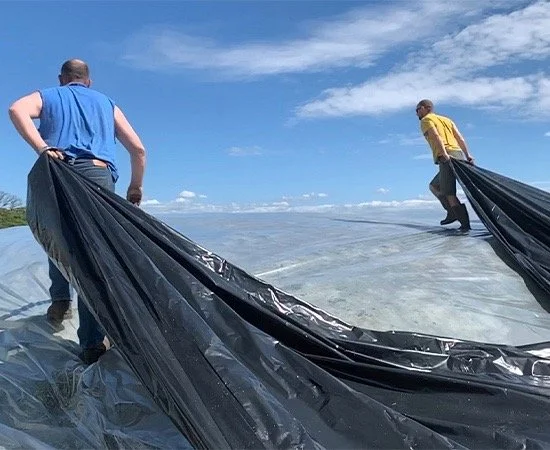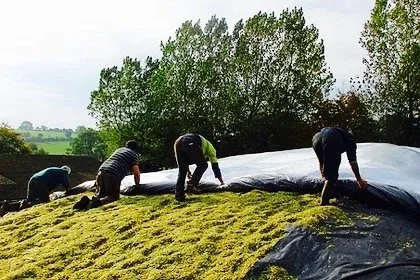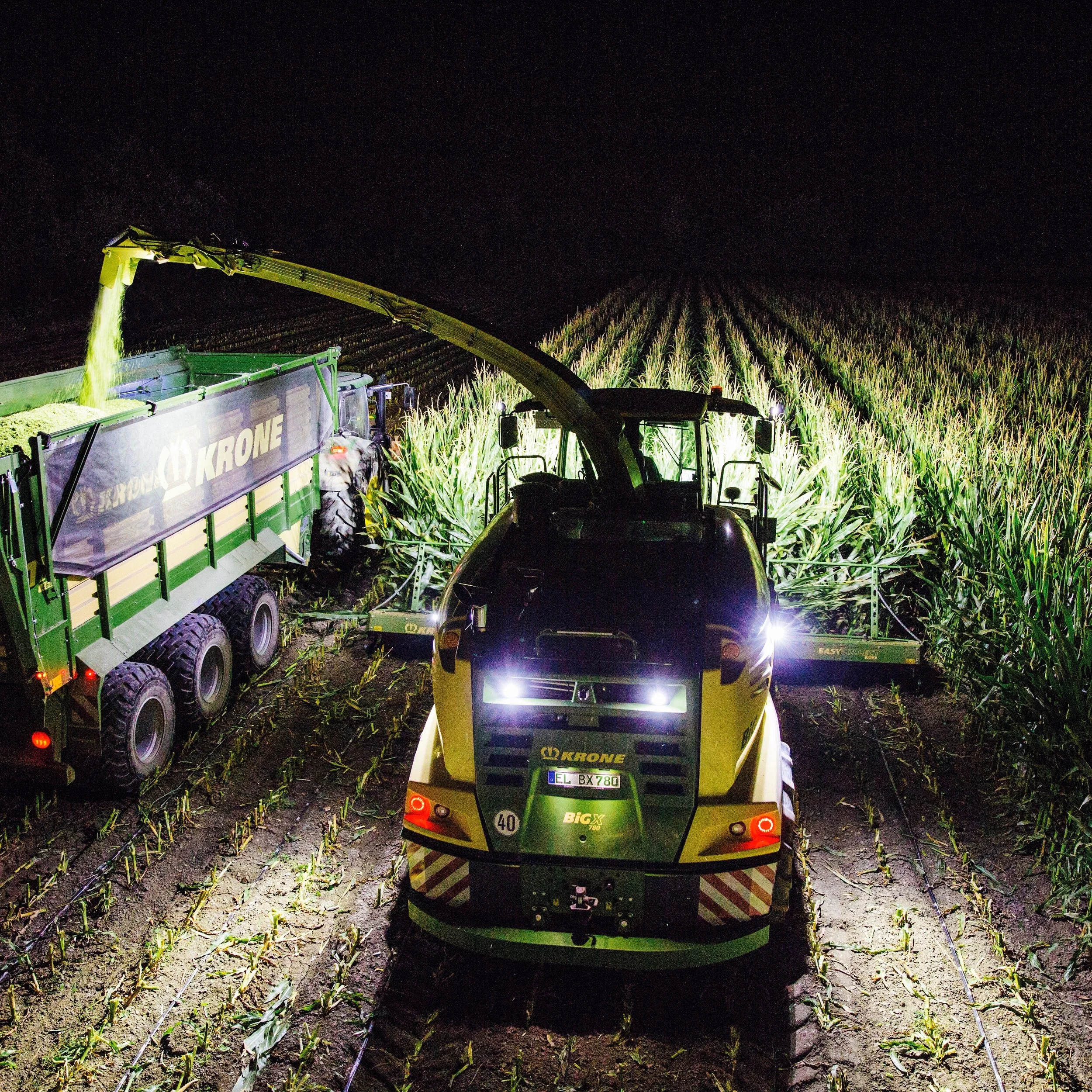Can I leave sheeting the clamp until the morning?
I don’t think I’ve ever met anyone who really enjoys sheeting up a silage clamp. To be honest it’s a wonder some clever innovator hasn’t come up with a better solution (and they might have here) because we all hate dragging a flapping sheet, on a 45-degree angle whilst dodging flying tyres laden with silage tyre juice. And to cap it all off, everyone is completely knackered after working a triple shift to get the silage in the clamp in the first place.
So at the end of a long day, is it really necessary to sheet up silage or will it be ok to leave it until the morning? If it’s not going to rain, it can’t come to much harm can it?
Well I’m going to upset almost everyone I know here, because yes it does matter.
Visqueen Silage Sheets
To understand why this is so important we need to consider what the sheet is actually doing. It’s true the sheet does protect the silage from rainfall and weather but that is really a secondary role. The most important job is to provide a gas barrier between the silage and the atmosphere. As we have covered elsewhere, during the early phase of fermentation, aerobic bacteria, yeasts and molds use up oxygen and produce (amongst other things) CO². In a sealed environment, as the oxygen gets used up and the carbon dioxide levels increase, the activity of these microbes declines until it’s all but stops.
And why is this important?
Well these microbes are using the silage nutrients to fuel their activity and that’s fuel that the cows or AD plant bacteria were banking on. If you don’t cover the silage with a gas barrier, then the CO² levels don’t build up and fresh oxygen gets introduced on the breeze; and the process goes on and you lose more silage nutrients.
We rolled the silage really well so do we still need to sheet it tonight?
Getting really good consolidation with short chop length and adequate rolling of the silage surface will reduce the gas permeability of the clamp. But reducing something is not stopping it – I might have lost some weight (I really haven’t) but I would still be overweight. A sheet that seals the clamp stops the transfer and allows the process of fermentation preservation to start.
So what are the costs of not sheeting up at the end of the day?
If you are looking forward to something to eat and bed, it can take a lot to encourage you to even think about sheeting the clamp tonight; but maybe some cold hard numbers might do it. Current estimates suggest grass silage is costing around £36 per tonne of fresh weight to produce. At 30% DM, each tonne has 300 kg of dry matter so that’s a cost of 12p per kilogram DM. Assuming 11.5 MJ ME/Kg DM each megajoule of energy is costing just over 1p.
Leaving the clamp uncovered for 12 hours might lose you a couple of megajoules of energy in the top foot or 300mm of the silage. That won’t be a uniform decline as the losses will gradually reduce from the surface down into the silage. However let’s assume a 1500 tonne clamp that’s 700 square metres of surface area. At a density of 750kg per cubic metre then the 300mm layer is around 210 tonnes. That silage contains a total of 724,500 megajoules of energy at 11.5 ME. Losing 2 ME in that layer is 126,000 megajoules and at 1.04 pence per megajoule it’s a total cost of £1,310.40! If you want to replace that energy with wheat you need just over 9.1 tonnes so at £300 per tonne that’s over £2,700!
So now I’ve got your attention, I will give you the really bad news; this isn’t the only loss you are going to generate by pulling the bed covers on before the silage covers. The populations of aerobic microbes that are chewing up the energy are also reproducing. Once the clamp is sheeted and sealed, these populations become dormant. This dormancy ends once the silage is exposed to oxygen during the feed out phase. The consumption of nutrients re-starts as does the production of mycotoxins that add insult to injury.
Practical steps to help a knackered silage team
So everyone is knackered and you’ve got milking in the morning etc etc, and now we need to sheet the clamp as well! What practical steps can you put in place to make this more likely to happen, and to happen more safely?
As always planning ahead is key. The biggest thing we are facing here is the mental approach; the mindset of those involved is the last load - “once that’s in we are done”. If you make it really clear from the kick-off that the end of this job is sheeting up, not the last load then it changes the mindset. Try and progress the clamp filling and rolling towards the front so that the back is ready to sheet before the last loads come in.
Chopping late with Krone Big X
If all else fails try bribery.
If it’s late, give everyone a snack to get the energy levels up as this also boosts the mood. Make sure you have plenty of light because sheeting in the dark can be a pretty dangerous job. Once the job is done, bribery in the form of a crate of beer might be appropriate. And yes you will be knackered tomorrow and milking might need to start an hour later, but the costs of this are minimal compared to the in clamp losses.
It’s important to remember that silage days are few and far between but they are super critical to the profitability of the business. On grazing systems, the silage amounts for about 50% of the total forage feed, for 365 housing and AD plants, silage is almost 100% of the forage portion. You make silage for maybe 3, or 4 days a year, maybe 20 days on a multicut system, but you feed it for 180 or 360 days so remember just how important those few harvest days are. If other things have to be compromised to make sure the silage is the best it can be then so be it – so come on let’s get the sheet on.
If you want to discuss how to make better silage or want to discuss any of the other aspects of silage making covered in this series – contact Jeremy Nash at Jeremy@silageconsultant.co.uk


